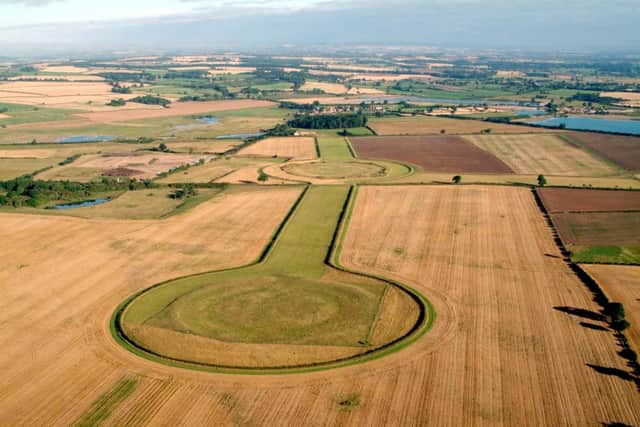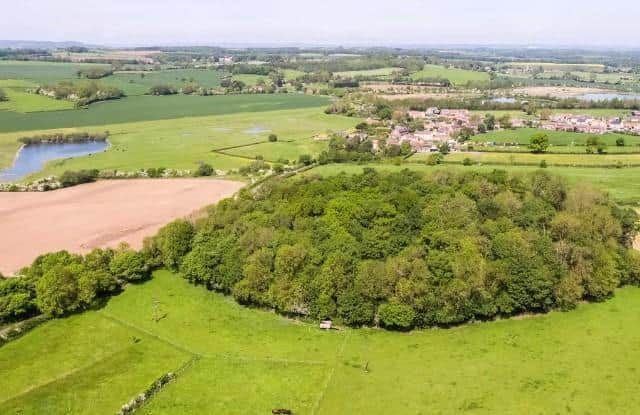Thornborough Henges sale: English Heritage decline to buy prehistoric Yorkshire monument as negotiations over price break down
The northernmost of the three Thornborough Henges, near Ripon, is currently being marketed for £200,000 through agents Knight Frank after being in private ownership for centuries.
English Heritage became custodians of the central and southern henges, which date from the Neolithic period and were used for ritual ceremonies and funerals, earlier this year when previous site owners Tarmac donated them to the nation.
Advertisement
Hide AdAdvertisement
Hide AdThe Times has revealed that landowner Richard Bourne-Arton, whose family have owned the nearby Tanfield estate since the 1880s, put the site, which is primarily woodland, on the open market after negotiations with English Heritage broke down over price. Although the henge is in ‘excellent’ condition, the tree cover means it is not as accessible as the other two henges, which can be visited by the public free of charge.


English Heritage cited the henge’s well-preserved state as a reason not to buy it from Mr Bourne-Arton – concerns were raised over the others because of damage caused by livestock grazing, meaning intervention was necessary to protect them. They added that ‘limited resources’ also played a part in the decision.
Although there has been interest in the site, a change of use is unlikely. It is a Scheduled Ancient Monument so cannot be developed or built on, and Camp Wood itself also has protection. A new owner would potentially open it to visitors, or simply keep it as a ‘folly’. Stonehenge itself was sold privately in 1915, but the buyer donated it to the nation soon afterwards.
The land itself has an interesting history. The manor passed to a Norman lord after the Conquest, and then through numerous aristocratic families, including the Marmions after whom the Marmion Tower in the village of West Tanfield is named after. For 200 years from the 1600s it was owned by the Earls of Ailesbury.
Advertisement
Hide AdAdvertisement
Hide AdIn 1886, the estate was acquired by Bradford mill owner Thomas Arton, who was attracted to the fishing rights on the River Ure. He continued to live at Micklefield House in Rawdon, between Leeds and Bradford, as there was no manor house at West Tanfield, the Earls having had Tanfield Hall demolished in 1816. The hunting lodge, Tanfield Lodge, became their main residence on the estate. His son William purchased Sleningford Park, on the opposite bank of the Ure, in 1918 and this became the main family home, Micklefield being sold for council offices in 1930.


However, the male line then became extinct as William’s only son died in childhood, so he divided his estate in 1949 between his two daughters, Margaret and Dorothy. Margaret received Tanfield, and she merged her surname with that of her husband’s. Sleningford went to Dorothy, whose grandson Edward Bryant owns it today.
Tanfield passed to Christopher Bourne-Arton and then to Richard and his wife Daphne, who run a fishery, hydroelectric power plant and holiday lodge business there.
.
